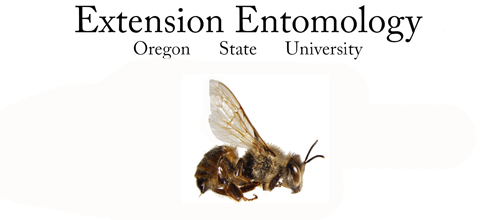| Oregon
State University Insect ID Clinic |
|
|
Honey Bee HomeOSU Insect ID Clinic
DiseasesAmerican Foulbrood PestsBears & other medium to large mammals |
 |
|
Honey Bee Diagnostic ServicesGreater Wax MothCausative Agent: Galleria mellonella (Lepidoptera, Pyralidae) Range: Worldwide Life cycle:
Management:
Misconceptions: Other Useful Sites: http://www.ento.psu.edu/MAAREC/pdfs/Wax_Moth_pm.pdf http://edis.ifas.ufl.edu/scripts/htmlgen.exe?DOCUMENT_AA141 References used: Root, A. I. (1990) The ABC & XYZ of bee culture 40 th ed. A.I Root Co. Medina, OH.
|
|
April 3, 2008
Disclaimer